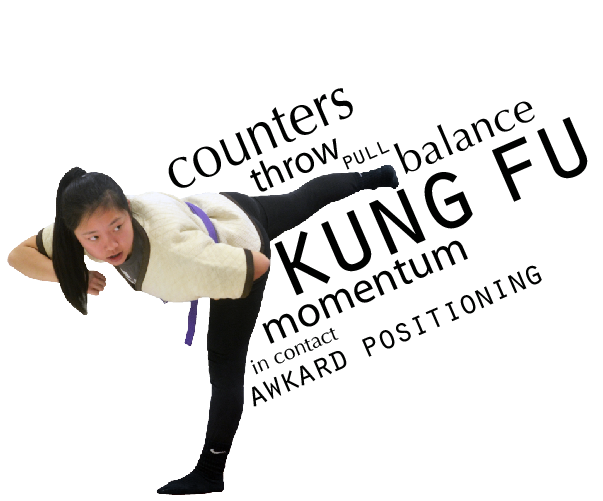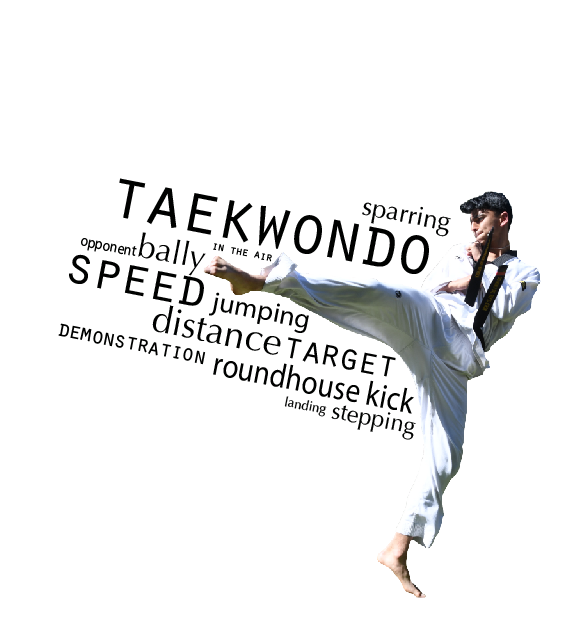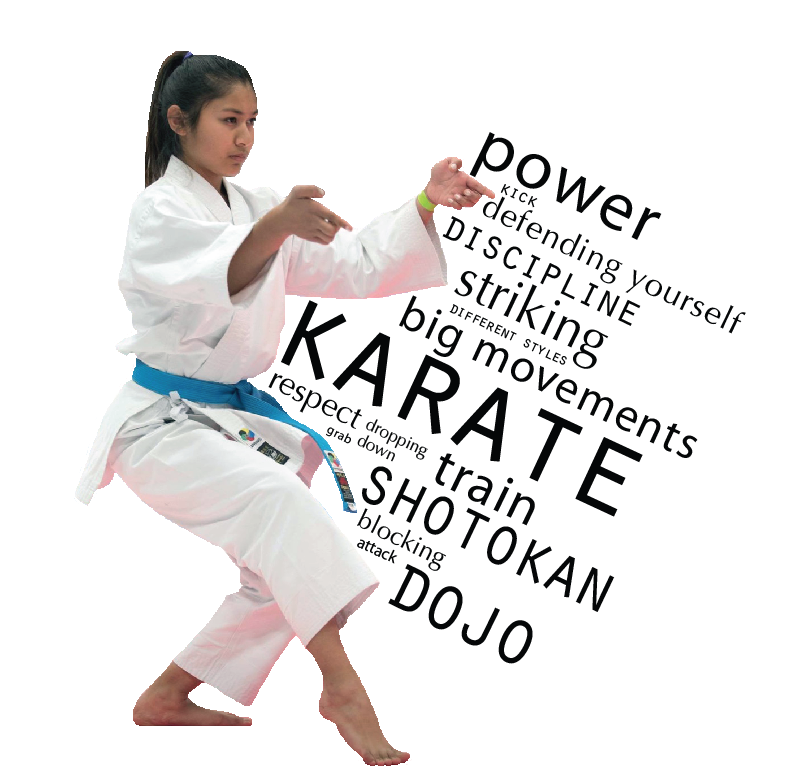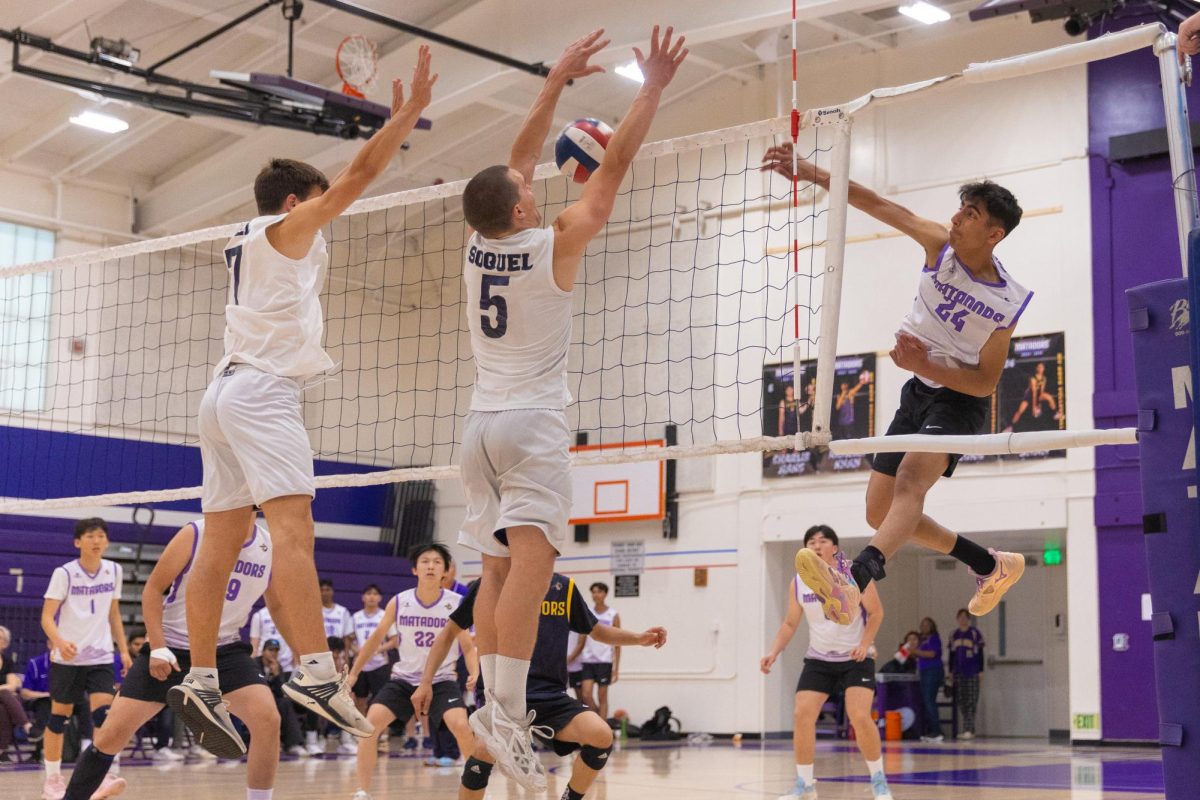SENIOR MIKAELA LEE, PURPLE BELT
“You’re balancing on one leg basically and your other leg is up, but I think the part I struggled most with [leg blocking] is the idea that you’re not getting super close to them … so the idea of using momentum, I have to pull them onto me [first], and then I throw them, instead of starting in contact with them and then pulling from there. For a lot of throws, you want the person that you’re throwing to feel like they’re in an awkward position themselves, so I think to get them in an awkward position, you’d have to get yourself almost in the same amount of awkward position[ing]. For kung fu, it’s more revolved around self-defense and you don’t always have to be the aggressive one to win. For this form of fighting, you can be on the passive side and you can be focused on counters.”

SENIOR KISHAN ARYASOMAYAJULA, FIRST DEGREE BLACK BELT
“So this kick is called a bally. It’s from a basic roundhouse kick, [but] instead of that, you’re stepping [and] jumping, and then doing a 360 in the air while kicking the board, or anything [that’s] your target and then landing on the same foot that you kick with. [Taekwondo] is more in tune with using your legs for keeping your distance away from the opponent [and] because there [are] not that many hand techniques that you can use for sparring and self-defense in general. You have the sparring aspect of speed and just trying to hit your opponent as fast as you can, as many times as you can, and then there’s the demonstration aspect where you want to jump high and put on a good show. I feel [taekwondo] is more effective in that real life situation because you don’t want to get too close to your opponent because they can do anything to you … they can have anything, but then if you use your feet, or some body part that’s longer than your arms, you can keep distance.”

SOPHOMORE ANJU JAIN, SECOND DEGREE BLACK BELT
“[This is] a block, so one person is coming and trying to grab you from the front, and what you’re doing is that you’re dropping down and blocking. The next move would be striking them so they can’t come at you again. That’s what karate is all about — defending yourself. You have to first block whatever is coming at you — it can be a fist, a kick, guns, anything. You block that and after, in order to make sure they stop attacking you, you strike them. In karate, there [are] a few different styles. I do Shotokan and that puts more emphasis on power and big movements rather than small. karate itself, it teaches you a lot of respect and discipline, so in the dojo, if you’re not respectful and you’re not disciplined, they will kick you out. They say, ‘Okay, if you don’t want to train and be respectful then [you] might as well not be here.’”










